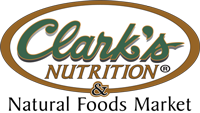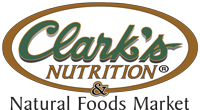Gluten Free
What does following a gluten-free diet mean? That you're embarking on an easy diet with a wide range of health-promoting effects. Instead of dwelling on what you’re giving up, consider that you’re going to enjoy a whole new world of delicious food options to meet your special dietary needs. You’ll be eating seasonally, choosing more fresh fruits and vegetables, focusing on meats, seafood, poultry, legumes, lentils, corn, and rice, and discovering fascinating ancient grains such as quinoa, amaranth, and millet. You’ll be able to eat potatoes, eggs, most cheeses, even chocolate (!)—and enjoy them without guilt because you’ll be taking good care of your body. In fact, you’ll probably end up eating—and feeling—better than ever!
Visit this page for more information about living Gluten Free
---
We carry a large variety of gluten free items, the brands listed below represent just some of the offerings we carry


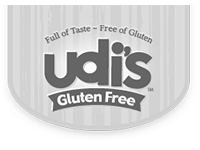





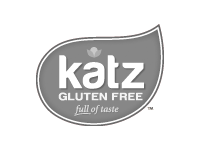



Raw Foods
“Raw” is all the rage these days, but what does it mean to eat raw? And is it possible to get enough protein and other nutrients while following a raw diet?
Raw foods are those that have not been heated above 108°F to 118°F
Raw, defined
Most raw foodists eat only plant-based (vegan) foods, including vegetables, fruits, nuts, seeds, legumes, and seaweed. Raw foods are those that have not been heated above 108°F to 118°F, depending on who you talk to. The logic behind this is that many of the nutrients in foods are extremely sensitive to heat. This is especially true of the water-soluble vitamins, like the B-vitamins, folate, and vitamin C. As Katie McDonald, a raw food chef and certified Holistic Health Coach in Rhode Island puts it, “The more you do to a food, the less it does for you.”
Raw food advocates also look to the enzyme content of raw foods, saying that cooking destroys delicate enzymes that could otherwise go toward improving the digestion of the foods you’re eating.
---
In addition to our always fresh produce, we carry many more raw foods throughout our stores. Look for these brands and our Raw Foods section for more.

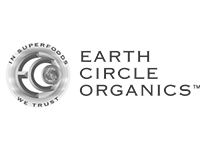

More Diets
Vitamin E
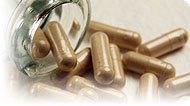
Side Effects
Vitamin E toxicity is very rare and supplements are widely considered to be safe. The National Academy of Sciences has established the daily tolerable upper intake level for adults to be 1,000 mg of vitamin E, which is equivalent to 1,500 IU of natural vitamin E or 1,100 IU of synthetic vitamin E.12
In a double-blind study of healthy elderly people, supplementation with 200 IU of vitamin E per day for 15 months had no effect in the incidence of respiratory infections, but increased the severity of those infections that did occur.13 For elderly individuals, the risks and benefits of taking this vitamin should be assessed with the help of a doctor or nutritionist.
In contrast to trials suggesting vitamin E improves glucose tolerance in people with diabetes, one trial reported that 600 IU per day of vitamin E led to impairment in glucose tolerance in obese people with diabetes.14 The reason for the discrepancy between reports is not known.
In a double-blind study of people with established heart disease or diabetes, participants who took 400 IU of vitamin E per day for an average of 4.5 years developed heart failure significantly more often than did those taking a placebo.15 Hospitalizations for heart failure occurred in 5.8% of those in the vitamin E group, compared with 4.2% of those in the placebo group, a 38.1% increase. Considering that some other studies have shown a beneficial effect of vitamin E against heart disease, the results of this study are difficult to interpret. Nevertheless, individuals with heart disease or diabetes should consult their doctor before taking vitamin E.
A review of 19 clinical trials of vitamin E supplementation concluded that long-term use of large amounts of vitamin E (400 IU per day or more) was associated with a small (4%) but statistically significant increase in risk of death.16 Long-term use of less than 400 IU per day was associated with a small and statistically nonsignificant reduction in death rates. This research has been criticized because many of the studies on which it was based used a combination of nutritional supplements, not just vitamin E. For example, the adverse effects reported in some of the studies may have been due to the use of large amounts of zinc or synthetic beta-carotene, and may have had nothing to do with vitamin E. It is also possible that long-term use of large amounts of pure alpha-tocopherol may lead to a deficiency of gamma-tocopherol, with potential negative consequences. For that reason, some doctors recommend that people who need to take large amounts of vitamin E take at least part of it in the form of mixed tocopherols.
Copyright © 2025 TraceGains, Inc. All rights reserved.
Learn more about TraceGains, the company.
The information presented by TraceGains is for informational purposes only. It is based on scientific studies (human, animal, or in vitro), clinical experience, or traditional usage as cited in each article. The results reported may not necessarily occur in all individuals. Self-treatment is not recommended for life-threatening conditions that require medical treatment under a doctor's care. For many of the conditions discussed, treatment with prescription or over the counter medication is also available. Consult your doctor, practitioner, and/or pharmacist for any health problem and before using any supplements or before making any changes in prescribed medications. Information expires December 2025.

